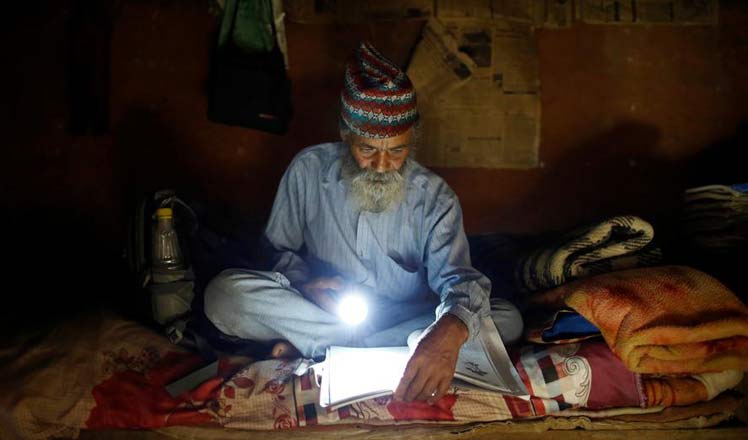China's homegrown navigation system to have 35-satellite constellation by 2020
Updated: 2016-06-16 11:30
(Xinhua)
|
||||||||
BEIJING - China's homegrown navigation system, the BeiDou Navigation Satellite System (BDS), will cover the whole globe with a constellation of 35 satellites by 2020, said a government report on Thursday.
By 2018, the system is expected to provide basic services to the nations along the Belt and Road, as well as neighboring countries, said a white paper on the BDS issued by the State Council Information Office.
China aims to build "a world-class navigation satellite system" to meet the needs of the country's national security as well as economic and social development, and provide "continuous, stable and reliable" services for global users, the report said.
The country would like to "share the fruits of development in the field of satellite navigation, increasing the comprehensive application benefits of global navigation satellite system", it said.
China upholds the principles of "independence, openness, compatibility and gradualness" in developing the BDS, it said.
-- It will uphold independent construction, development and operation of the BDS, and acquire the capability to independently provide satellite navigation services to global users.
-- It will provide open satellite navigation services free of charge, and encourage all-scale, multilevel and high-quality international cooperation and exchange.
-- It will enhance BDS compatibility and interoperability with other navigation satellite systems.
-- It will carry out the BDS project step by step, enhancing the system's service performance and boosting the satellite navigation industry in a comprehensive, coordinated and sustainable manner.
China's BDS project is made up of three steps. The first step started in 1994 and was completed in 2000 with a test system coded "BDS-1" providing users in China with positioning, timing, wide-area differential and short message communication services. For the BDS-1, China launched two Geostationary Earth Orbit (GEO) satellites in 2000 and the third in 2003.
The second step led to a more established system coded "BDS-2" which started in 2004. By the end of 2012, a total of 14 satellites - five GEO satellites, five Inclined Geosynchronous Satellite Orbit (IGSO) satellites and four Medium Earth Orbit (MEO) satellites - were launched to complete the constellation.
The BDS-2 added the passive-positioning scheme and provided users in the Asia-Pacific region with positioning, velocity measurement, timing, wide-area differential and short message communication services.
The third step, aiming to complete a fully-established BDS, started in 2009 and will be finished by 2020.
According to the report, thanks to a hybrid constellation consisting of satellites in three kinds of orbits, the BDS operates more satellites in high orbits and offers better anti-shielding capabilities than other systems, particularly observable in terms of performance in the low-latitude areas.
It provides navigation signals of multiple frequencies with better accuracy and integrates navigation and communication capabilities for the first time, which enables five major functions including real-time navigation, rapid positioning, precise timing, location reporting and short message communication.
By 2018, the system is expected to provide basic services to the nations along the Belt and Road, as well as neighboring countries, said a white paper on the BDS issued by the State Council Information Office.
China aims to build "a world-class navigation satellite system" to meet the needs of the country's national security as well as economic and social development, and provide "continuous, stable and reliable" services for global users, the report said.
The country would like to "share the fruits of development in the field of satellite navigation, increasing the comprehensive application benefits of global navigation satellite system", it said.
China upholds the principles of "independence, openness, compatibility and gradualness" in developing the BDS, it said.
-- It will uphold independent construction, development and operation of the BDS, and acquire the capability to independently provide satellite navigation services to global users.
-- It will provide open satellite navigation services free of charge, and encourage all-scale, multilevel and high-quality international cooperation and exchange.
-- It will enhance BDS compatibility and interoperability with other navigation satellite systems.
-- It will carry out the BDS project step by step, enhancing the system's service performance and boosting the satellite navigation industry in a comprehensive, coordinated and sustainable manner.
China's BDS project is made up of three steps. The first step started in 1994 and was completed in 2000 with a test system coded "BDS-1" providing users in China with positioning, timing, wide-area differential and short message communication services. For the BDS-1, China launched two Geostationary Earth Orbit (GEO) satellites in 2000 and the third in 2003.
The second step led to a more established system coded "BDS-2" which started in 2004. By the end of 2012, a total of 14 satellites - five GEO satellites, five Inclined Geosynchronous Satellite Orbit (IGSO) satellites and four Medium Earth Orbit (MEO) satellites - were launched to complete the constellation.
The BDS-2 added the passive-positioning scheme and provided users in the Asia-Pacific region with positioning, velocity measurement, timing, wide-area differential and short message communication services.
The third step, aiming to complete a fully-established BDS, started in 2009 and will be finished by 2020.
According to the report, thanks to a hybrid constellation consisting of satellites in three kinds of orbits, the BDS operates more satellites in high orbits and offers better anti-shielding capabilities than other systems, particularly observable in terms of performance in the low-latitude areas.
It provides navigation signals of multiple frequencies with better accuracy and integrates navigation and communication capabilities for the first time, which enables five major functions including real-time navigation, rapid positioning, precise timing, location reporting and short message communication.
- Orlando massacre sparks gun-control bill
- Cambridge students celebrate end of exams with cardboard boat race
- Pensions for elderly threatened if Brexit wins, warns British PM
- Park calls for national unity on peninsula's denuclearization
- 232 Indian cadets take part in parade in Bhopal
- UK's Cameron warns health services, pensions could face cuts post-Brexit

 Rio Olympics unveils medals
Rio Olympics unveils medals
 New photos capture life in China
New photos capture life in China
 Fair ladies at Royal Ascot
Fair ladies at Royal Ascot
 Never too old to learn; Nepal's 68-year-old student
Never too old to learn; Nepal's 68-year-old student
 Tourists visit beer museum in E China's Qingdao
Tourists visit beer museum in E China's Qingdao
 Turning straw to gold: folk artist's straw pyrography
Turning straw to gold: folk artist's straw pyrography
 People in shock after Florida nightclub shooting
People in shock after Florida nightclub shooting
 Shanghai Disneyland all set for official opening on Thursday
Shanghai Disneyland all set for official opening on Thursday
Most Viewed
Editor's Picks

|

|

|

|

|

|
Today's Top News
Abe's blame game reveals his policies failing to get results
Ending wildlife trafficking must be policy priority in Asia
Effects of supply-side reform take time to be seen
Chinese State Councilor Yang Jiechi to meet Kerry
Chinese stocks surge on back of MSCI rumors
Liang avoids jail in shooting death
China's finance minister addresses ratings downgrade
Duke alumni visit Chinese Embassy
US Weekly

|

|







